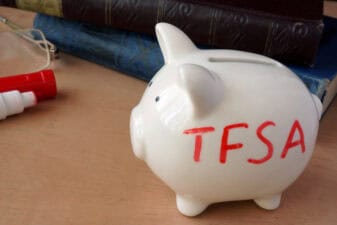In February of this year, the annual pace of inflation rose 1.1%. In March, it doubled, jumping to 2.2%. Analysts and financial experts blamed rising inflation rates on pandemic-led lockdowns and spending freezes experienced in March 2020. Don’t worry, they said, it’ll go down.
But it hasn’t. Recently, Canada Statistics reported that the April consumer price index went up 3.4% year over year, rising over 1.2% since March.
That in itself is a little alarming. Of course, you could make the same argument financial experts made last month: inflation rates are up because, well, prices took a dive last April.
On the ground, however, most Canadians are feeling the full effects of rising prices. Everything from groceries to gas to mattresses has seen a price lift, and the recent lumber shortage has made buying furniture or finishing a home project much more expensive.
Inflation may not be something you can control. But it is a force to be reckoned with. If inflation is hurting your budget, here are some proactive steps you can take to protect yourself.
1. Drive less
According to Statistics Canada, gas prices were up 62.5% year over year. In fact, gas prices are so high, if you removed them from the inflation rate, inflation would have only increased by 1.9%, not 3.4%.
And with vaccinations making travel more likely, with oil production falling, with carbon taxes going into effect, gas prices aren’t expected to fall anytime soon.
So, perhaps the best defense for your money is to, well, stop driving, or at least reduce how much you drive. If you can’t avoid getting on the road, or car pooling isn’t an option, you could at least adopt fuel efficient driving techniques. Accelerate gently, avoid high speeds, and learn to maintain a steady speed, rather than accelerating in dips and bursts.
2. Cut expenses
Next, I’d look at your budget and find spending categories to cut. Look specifically at categories that have been directly impacted by inflation. We’ve already talked about gas, but now might be a good time to revisit your food and utilities categories. If inflation has gone up by 3.4%, I’d try to cut my spending in those categories by at least 3.4%.
Second, I’d also practice delayed gratification for certain purchases that have been hit hard by rising prices, such as cars, mattresses, and furniture. Timber prices have quadrupled in the last year. If you were planning to build anything this summer, I’d postpone your project until the cost of lumber comes back down.
3. Beef up your emergency fund
Ideally, you want three to six months of emergency savings sitting in an account that you can access easily.
Because your emergency savings aren’t invested in stocks or other assets, it’s not going to grow at the rate of inflation. For that reason, your emergency fund loses purchasing power as inflation grows.
For peace of mind and security, I would add money equal to the rate of inflation to my emergency fund. So, if I had $40,000 in my fund and inflation grew by 3.4%, I would add at least 3.4% of $40,000 ($1360) to my emergency fund.
4. Ask for a raise
If you were contemplating asking your boss for a raise, now is a great time to bring it up. You have a strong argument, too, especially if your job is in high demand.
5. Keep investing in stocks
Finally, no matter how inflation rates swing, your best defense is to stay invested in the stock market. Over the long-run, the rate of return on stocks tends to outpace the inflation rate. As long as you stay invested (investing in the short-term doesn’t produce the same results), you’ll have a strong hedge against rising prices.
Speaking of hedging inflation with stocks …


